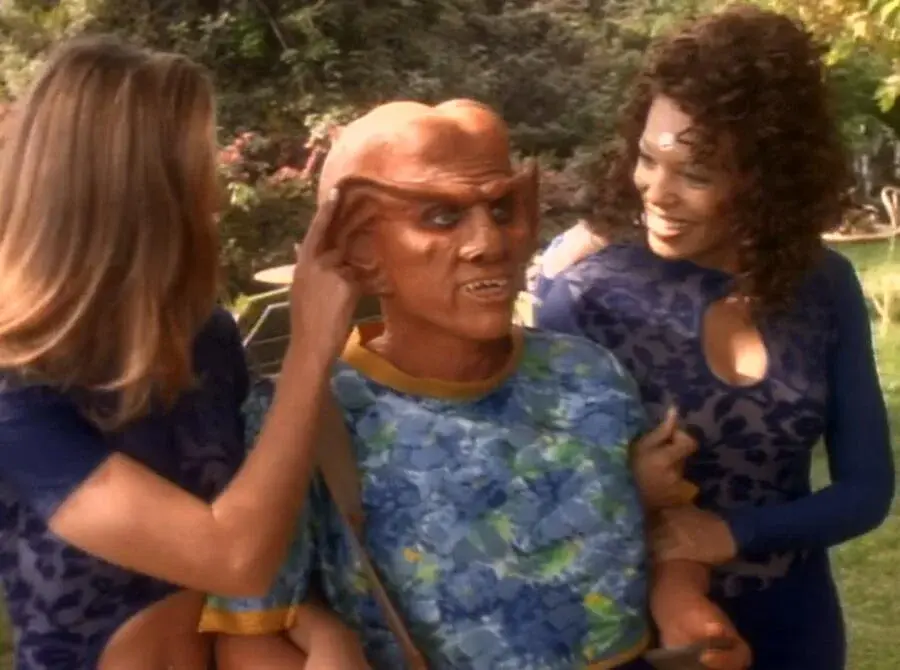It’s the central pedal force
my bike doesn’t have a central pedal. how does it stay up right?
Magnets
Aliens.
Does it have a central fugue? Classical physics teachers don’t want to talk about that but if you look back to the Baroque interpretation it was all the rage.
Magnetic aliens
Dynamic stability
Having the pivot point (steering) for the front wheel behind it’s axle helps
Yes there are demonstrations on YouTube of bikes just wanting to remain upright. You can role it down a hill and it will self correct. Something to do with physics but I forget the terms.
A Veritasium video about the topic, if someone is actually interested: https://youtu.be/9cNmUNHSBac
Wait til anon hears about launch loops or space elevators
How long does it take to go up the space elevator?
What floor are you getting off at?
Not getting off in an elevator, that would be gross.
Hey, it’s okay if you can’t finish, that’s normal.
B-16
About tree fiddy then
Gyroscope effect. You ever do the experiment where you spin a bike tire really fast and then try to tilt it? Shit’s nuts.
Hmmm… Both things involve bicycles… Maybe they’re just magic?
My next DnD character will be a bicyclist
I cast “Find greater Iron Steed”
Mine will just be a bike
Town bike?
( ͡° ͜ʖ ͡°)
The gyroscopic effect of slowly spinning, light bicycle wheels is negligible compared to the weight of the bike and it’s rider. If it was what keeps you upright, riding a tiny scooter-thing with skateboard/inliner wheels would be impossible. I mean those without motor, pedals, where you push yourself forward with one foot on the ground), often for kids.
What actually keeps you upright isn’t a physical effect, but just training your brain to instinctually keep you upright. While you’re moving, turning the handlebar effectively moves the bike below you left and right. So if you start tilting to the right, you turn right (slightly) so the bike/scooter is moving below you to compensate. That’s why learning to ride anything that is balancing on 2 wheels takes a relatively long time, but only once. Then your brain knows what to do, and it just works without thinking about it.
But then, why would they be more stable when moving, even without a rider? If the steering is tight enough, you can push a bike to someone a good distance away. You can do it with a scooter too, although it’s a lot harder.
You can also look at a motorcycle. Their mass is far greater than a human’s, a person could never manage that. Those little RC motorcycles are the same, they don’t need some crazy balancing system to mimic humans, they just need to stay upright enough to get some speed going, then they balance themselves.
It’s the same with a wheel - the speed makes it stay upright, they can balance on the tiniest edge so long as they’re moving
It’s not a gyroscopic effect either, though that’s present. It’s a balance between rotation speed and the friction with the ground - the object as a whole has momentum, the rotation has momentum, and the contact with the ground balances the two. It’ll try to put it’s center of mass in line with these forces acting on it
Add in a human, and they can shift the center of mass on the fly. The vehicle’s speed is still pushing you upright - get on a bike with some good speed, and you can lean very far into a turn and ease off to return upright. Way more than you could if it wasn’t moving
Normal bikes that you just push aren’t that stable without a rider, but you can get it some distance. They still fall over rather quickly. That’s mostly the form of the handlebars like gnu commented. And yes, without a rider, the gyroscopic effect is relevant. A bike weighs let’s say 15 kg, and a rider is commonly like 75kg. Of course removing like 80% of the weight changes if the gyroscopic has a meaningful influence. Add the rider back, and it becomes negligible again.
This is of course even more pronounced if you push only a wheel with nothing else, then there’s nothing left but momentum and the gyroscopic effect.
The reason you lean into a turn is exclusively the centrifugal force (not sure that’s the right twin), if you don’t you fall over because you have nothing to turn against. Changing direction needs something to push against.
The design of the front forks also assists with stability - having some rake and trail means the front wheel has a tendency to self centre (particularly at speed).
That only causes part of the effect, most of it is the bike’s steering countering the momentum of your fall.
You wouldn’t be able to balance on a bike with just the wheel spinning, you’re too heavy. That is why bikes on those indoor rollers allow the bike to move left and right a bit.
Just wait till OP learns that you need to counter-steer bikes to balance
That’s always fun. Some people will swear it can’t possibly work like that, but they have plenty of experience riding bikes. You wouldn’t be able to turn properly at speed unless you’re counter-steering, so they clearly have done this. The idea seems to be so incredibly intuitive that people don’t even realize they’re doing it, which is very interesting.
So biking is just falling with style?
So is walking
Just like orbiting something. Satellites are constantly just falling back to earth, but with enough grace to always miss earth. I bet satellites would be great cyclists!
There is an art, it says, or rather, a knack to flying. The knack lies in learning how to throw yourself at the ground and miss. … Clearly, it is this second part, the missing, which presents the difficulties.
Turning a motorcycle or bike is falling with purpose! The faster you are falling (leaning over more), the faster you turn!
But pedaling on a treadmill make you fall over.
What the hell?
They’re called rollers, and they’re pretty easy to ride on.
I have heard that it is VERY hard to get started and then very quickly becomes thoughtlessly easy
I wouldn’t say easy… But yeah, you don’t just fall over.
Is it possible for the bike to fall off the rollers, sending everything crashing into the nearest wall?
No, if you fall off the rollers, your wheels just stop. Bicycle wheels don’t have anywhere near enough mass for their momentum alone to move your body.
And pedaling in space makes you balance!
How the hell?
No, you’d start spinning
Does it? I bet some weirdo on YouTube has done this.
you’re absolutely right. I searched it before making that comment and there’s one random dude who did exactly that, he even wondered himself if anyone has ever done that.
If you’ve forgotten high school physics (like me), this is a legitimately strange phenomenon.
Real talk, science doesn’t have the answer to this yet.
not magic, gyroscopes. the wheels act as gyroscopes once they have sufficient rotational speed.
Brah just discovered conservation of angular momentum
It’s not that. Gyroscopic action exists of course, but it’s fairly weak against the weight of your body. Balancing a bicycle is just like balancing an umbrella on your finger, except you can easily move your finger any direction you need. To move the bicycle sideways, you need to already be moving forward.
Track stands! Not a contradiction to your statement at all though: you need to be moving just ever so slightly.
With a fixie it’s easy, because you can pedal forwards and backwards in tiny amounts. With a freewheel, it’s trickier but you get the hang of it with practice. Ideally you’ll have an incline, so you pedal forward to go forward, and ease up to slide back. After some practice I can use the raised reflective paint from e.g. crosswalks as the “incline.” This miniscule motion is enough to balance — and like you said, it ain’t the angular momentum that does it.
it really is that though, have you not done the rotating wheel experiment? it is fucking hard to tilt the axis of a wheel rotating at a speed which is comparable to biking speed.come to think of it maybe not:
Which is just regular conservation of momentum plus a force directing it towards some center point it oscillates around, which feels weird because you can hold a lot more of it in your hands than you normally can without that oscillation.
Vy two
Think of this as you inch forward until the green light with a motorcycle behind you. Just stop. Riding at 2 mph is misery.
Get a lighter bike, mate. Scooter goes brrrr! But also, yes. Please god, the misery of traffic jams must stop. Let me lane split!
I got a tenere 700 coming from a rebel 500, both relatively light bikes but the tenere is so tall it’s hard to waddle. I’d honestly love a scooter just for commuting and errands.
I live in a state where splitting is illegal but I can get away with filtering at stoplights. :)
I’m mostly joshing ya. My scooter weighs all of 150 wet, but I have a sport tourer that’s somewhere around 700. It sucks to maneuver that thing. I wish the feds would do something about lane splitting. Once upon a time they were able to get us on HOV lanes.
What’s really hard is getting a 5 year old to understand this before you run out of energy from trying to hold their seat and run at the same time.
My kid screams “un-let go” at me while balancing perfectly well. She understands, she does not accept.
That’s how I learned it. My dad got tired, let go and stopped.
I noticed it was suddenly much easier to pedal, so I turned around to see him standing 30ft behind me, then I crashed.This is the way.
Getting my 5yo to accept that he can peddle and balance by himself; takes longer than the ability. He used to crash once he realized I had stopped balancing him, sometimes it would take a minute or more.
It’s a lot easier if you get a balance bike first. They’ll naturally try coasting because that’s fun, so all they need to figure out is pedaling to move on to a real bike.
I did that with two kids, and it worked well both times.
Fuckin magnets
How do they work?
Tide comes in, tide comes out, You can’t explain that.
For those that don’t know: Bill O’Reilly Doesn’t Understand How Tides Work
The dumber a civilization is, the more sense God makes.
This pretty accurately describes conservatives.














